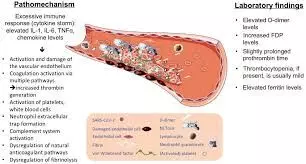Obicetrapib excels as lipid lowering agent in Phase 3 trials

Obicetrapib, a highly selective oral CETP inhibitor, has shown significant promise in a Phase III trial by dramatically reducing LDL cholesterol levels in high-risk individuals who had an inadequate response to existing lipid-lowering therapies, all without noticeable side effects. These findings support its potential as an effective treatment for patients already on maximal lipid-lowering therapy. Additionally, a cardiovascular outcomes trial is currently underway to evaluate its long-term impact in adults with a history of atherosclerotic cardiovascular disease and persistently high LDL cholesterol.
Obicetrapib is a highly selective cholesteryl ester transfer protein inhibitor that reduces low-density lipoprotein (LDL) cholesterol levels. The efficacy and safety of obicetrapib have not been fully characterized among patients at high risk for cardiovascular events.
They conducted a multinational, randomized, placebo-controlled trial involving patients with heterozygous familial hypercholesterolemia or a history of atherosclerotic cardiovascular disease who were receiving maximum tolerated doses of lipid-lowering therapy. Patients with an LDL cholesterol level of 100 mg per deciliter or higher or a non–high-density lipoprotein (HDL) cholesterol level of 130 mg per deciliter or higher, as well as those with an LDL cholesterol level of 55 to 100 mg per deciliter or a non-HDL cholesterol level of 85 to 130 mg per deciliter and at least one additional cardiovascular risk factor, were eligible for inclusion.
The patients were randomly assigned in a 2:1 ratio to receive either 10 mg of obicetrapib once daily or matching placebo for 365 days. The primary end point was the percent change in the LDL cholesterol level from baseline to day 84. Results: A total of 2530 patients underwent randomization; 1686 patients were assigned to receive obicetrapib and 844 to receive placebo. The mean age of the patients was 65 years, 34% were women, and the mean baseline LDL cholesterol level was 98 mg per deciliter.
The least-squares mean percent change from baseline to day 84 in the LDL cholesterol level was −29.9% (95% confidence interval [CI], −32.1 to −27.8) in the obicetrapib group, as compared with 2.7% (95% CI, −0.4 to 5.8) in the placebo group, for a between-group difference of −32.6 percentage points (95% CI, −35.8 to −29.5; P<0.001). The incidence of adverse events appeared to be similar in the two groups. Among patients with atherosclerotic cardiovascular disease or heterozygous familial hypercholesterolemia who were receiving maximum tolerated doses of lipid-lowering therapy and were at high risk for cardiovascular events, obicetrapib reduced LDL cholesterol levels by 29.9%.
Reference:
Safety and Efficacy of Obicetrapib in Patients at High Cardiovascular Risk
Authors: Stephen J. Nicholls, M.B., B.S., Ph.D., Adam J. Nelson, M.B., B.S., Ph.D., Marc Ditmarsch, M.D., John J.P. Kastelein, M.D., Ph.D., Christie M. Ballantyne, M.D., Kausik K. Ray, M.D., Ann Marie Navar, M.D., et al. DOI: 10.1056/NEJMoa2415820. The New England Journal of Medicine.
Powered by WPeMatico









